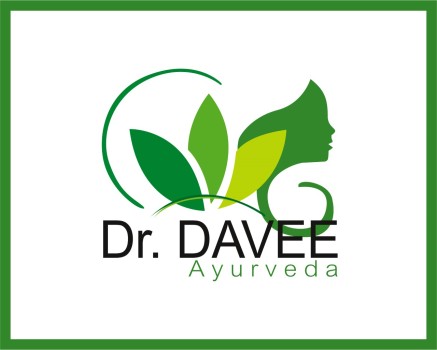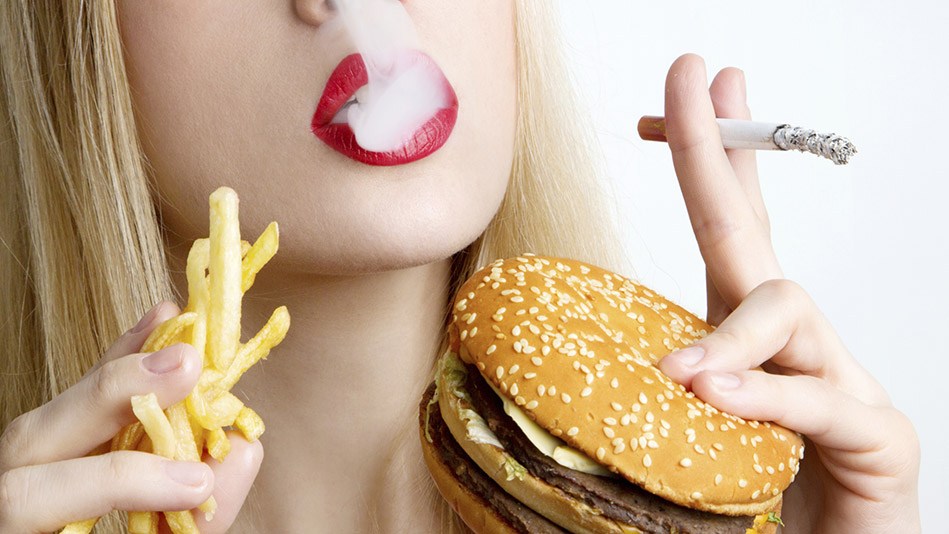No século 21 vemos que a intoxicação alimentar é algo muito comum, qual a solução que o Ayurveda deu para essa questão? Porém, Ayurveda explicou este tópico de maneira diferente. Isso pode nos ajudar muito nos tempos modernos. (Neste blog, mencionamos os termos em sânscrito, juntamente com uma tradução em português, assim o leitor pode conhecer as palavras em sânscritas, que é a lígua nativa da ìndia).
O Ayurveda tem 8 ramos de especializações, agadtantra é uma dessas ramificações que lida com a toxicologia.
Nos velhos tempos, o rei providenciava a residência do médico real perto do palácio para que o médico pudesse estar presente em todas as situações e em todos os momentos.
Os alimentos e bebidas do rei deviam ser protegidos contra venenos, porque a saúde e o bem do rei dependiam de sua comida e bebida e a saúde e o bem-estar do país dependiam do Rei.

Acharyas (mestres) do Ayurveda realizaram um estudo muito profundo de tudo. Por conta disso mencionaram características de alimentos e bebidas envenenados. Eles poderiam reconhecer alimentos e bebidas envenenados sem qualquer tecnologia avançada, da mesma forma que agora também podemos usar isso em nossas atividades diárias.
Características de alimentos e bebidas envenenados

Arroz cozido misturado com veneno:
1) Sandra – torna-se espesso;
2) Mesmo quando fervendo, os alimentos não transbordam da panela;
3) Chirena Pachyate – levam muito tempo para cozinhar;
4) Pakvo bhavati paryushitopama – depois de cozinhar, tornam-se úmidos e estragam muito rápido;
5) Mayura Kantha Tulyoshma – emite vapor com a cor do pescoço do pavão (azul);
6) Moha moorcha prasekakrut – os vapores e fumaças do recipiente causam delírio desmaio e salivação excessiva;
7) Heeyate varna gandhadyaihi – perde rapidamente a sua cor original, odor, sabor e textura,
8) Klidyate chandrikachitaha – torna-se aguado e cheio de partículas reluzentes.
As laterais dos pratos secam rapidamente e tornam-se sujos;
As imagens reflexivas vistas neles parecem deficientes, malformadas, anormais ou não são vistas;
espuma e linhas aparecem na sua superfície e bordas; fios e bolhas podem aparecer; Raga (xaropes doces), Khandava (pudins doces), vegetais e carnes se quebram (as porções líquidas e sólidas se separam) e adquirem um gosto ruim.

1) Neela Raji Rase – Linhas azuis aparecem na sopa de carne,
2) Tamra ksheere – linhas vermelhas no leite e
3) Shyava dadhani – pretas na coalhada
4) Peeta Sita takre – linhas amareladas e brancas no soro do leite coalhado,
5) Ghrute paaneeya sannibha – linhas aquosas no ghee,
6) Mastuni syat kapotabha – pegion como raias aparecem em Mastu – Supernatent líquido de coalho (soro),
7) Raji krishna tushodake – linhas pretas e azuis em Tusodaka (bebida ácida preparada a partir de casca da cevada),
8) Kaali madya ambhasoho – linhas pretas em vinhos e água,
9) Harit taile arunopama – linhas verdes no mel e carmesim em óleos.
10) Os frutos não maduros amadurecem (rápido) e maduros tornam-se moles e se decompõem. As substâncias que são verdes e secas tornam-se duras na aparência e descoloridas.
11) Substâncias de alimentos macios tornam-se duros e vice-versa.
12) As flores da guirlanda se dividem em suas bordas, desaparecem e assumem cheiro não natural.
13) Manchas sujas aparecem no pano (vestido e outras roupas), seus fios caem.
14) Recipientes de metais, pérolas, madeira, pedras, pedras preciosas etc. tornam-se sujos, perdem o seu toque suave e brilho.
15) Os vasos de barro ganham suave toque e brilho.
Vishada Laksana (características da pessoa que coloca veneno)

A pessoa que está prestes a envenenar alguém terá
1) Shyava Shushka Asya – rosto seco e descolorido
2) Vilaksho Veekshate dishaha – olhar desconfiado em todas as direções
3) Sveda vepathuman – sudorese e tremores
4) Trasta – cansado,
5) Bheeta – assustado
6) Skhalati – escorrega enquanto fala e anda
7) Jrumbhate – boceja freqüentemente
Teste de alimentos envenenados – Vishanna Pareeksha

Ao lançar o alimento envenenado em chamas, ele emite um som crepitante, emite uma única chama, sem movimentos, a cor da fumaça se parece com a do pescoço do pavão (azul reluzente), às vezes a chama pode não aparecer. Isso causará a emissão de cheiro muito forte.
1) Mriyate Makshikaaha – ao comer tal comida, as abelhas morrem
2) Kaakaha kshaamasvaro bhavet – A voz do corvo se esgota
3) Parot, Dathyuha (pássaro gallinule) e Sarika (Mynah) começam a piar no alimento envenenado, apenas por vê-lo.
4) Hamsaha praskhalati – O cisne muda o movimento de sua marcha
5) Glaanih: jeevenjeevasya jaayate – Chukar fica exausto
6) Chakorasya akshivairaagyam – Os olhos do faisão de Greeh ficam vermelhos
7) Kraunchasya madodaya: – A garça-real da lagoa fica intoxicada
Pigeon (pombo), Parabhrit (Cuco) e Chaktravaaka perdem a vida
8) UdvegaM yaati maarjaara: – o gato fica irritado, excitado
9) Shakrun munchati vanara: – macaco defeca
Depois de confirmar o alimento envenenado pelos métodos mencinados acima, ele deve ser descartado cuidadosamente.
Doenças causadas por alimentos envenenados –
Efeitos externos:
O toque em alimentos envenenados produz coceira e irritação, sensação de queimação em todo o corpo, sensação de queimação no local do toque, febre, dor, erupções, perda de sensação tátil, queda de unhas, cabelos e inchaço.
O tratamento deve ser: banho (lavar), com água processada com drogas anti-venenosas, aplicação de pasta de Sevya (Ushira), Candana (sândalo), Padmaka – Cereja Himalaia Selvagem (madeira de coração) – Prunus puddum / cerasoides; Somavalka , Talisa Patra – Cinnamomum tamala, Kushta (Saussurea lappa), Amrita (Tinospora) e Nata – Valeriana wallichi.
Efeito local na cavidade oral:
O alimento envenenado dentro da boca provoca excesso de salivação, inatividade da língua e dos lábios, sensação de queimação, formigamento dos dentes, incapacidade de perceber o gosto e a rigidez da mandíbula inferior.
O tratamento deve ser gargarejo com água processada com Sevya – Khus Khus – Vetiveria zizanioides e outras drogas mencionadas anteriormente e todas as outras terapias para a boca que são anti-venenosas.
Ao chegar ao estômago, produz transpiração, desmaio, flatulência, toxicidade, vertigem, arrepios, vômitos, sensação de queimação, perda de movimento dos olhos e do coração e aparecimento de pontos pretos em todo o corpo.
Alcançando os intestinos produz vômitos de muitas cores, excesso de urina, purgação, sonolência, emaciação, palidez, aumento do abdômen e perda de força.
Para ambas as condições, o paciente deve administrar Vamana (emese) e Virechana (terapias de purgação), seguido de Nasya (medicação nasal), Anjana (colirio) e beber decocção preparada a partir de Haridra – Curcuma Longa e Daruharidra (Berberis aristata), Jyotishmati – Celastrus paniculata, Guda-rapadura, Sinduvarita, Nispava, Baspika, Sataparvika, raízes de Tanduliyaka, Kukkutanda – ovo de galinha e Avalguja – Psoralea corylifolia para aliviar o efeito do veneno.
Hrid Vishodhana – Gara Visha Chikitsa – Tratamento para desintoxicar o coração e tratar envenenamento crônico:
Quando há envenenamento, os primeiros tratamentos são vômito e purgação para remover o veneno remanescente no intestino. Então, para limpar e desintoxicar o coração, Tamra bhasma (cobre Bhasma purificado) é administrada ao paciente. Depois disso, Swarna bhasma (purificado ouro Bhasma) é administrado por um longo período de tempo. Por essa administração de Swarna por muito tempo, o corpo torna-se tão puro quanto o ouro. O termo usado para isso é ‘Hemapanga’.

Na Sajjate Hemapange padmapatre ambuvat visham ||
Em uma pessoa que recebeu muito tempo o ouro purificado em forma de Bhasma, o veneno não pode causar dano, a uma gota de água que não pode tocar a folha do lótus. A pessoa ganha vida longa. O mesmo tratamento é seguido em Gara Visha (envenenamento crônico).
NOTA – Informações escritas em um blog apenas para fins de conhecimento, um deve tomar conselhos do médico ou terapeuta Ayurveda, não tome nenhum tratamento ou medicação sem o especialista em Ayurveda.
Estamos tentando propagar Ayurveda de tal forma que todo leitor deve obter conhecimento autêntico do Ayurved diretamente dos textos antigos, por favor, compartilhe esses blogs porque sempre “compartilhar é cuidar” (Sharing is Caring)
“Precisamos apoiar o Ayurveda como fizemos com o Yoga Shastra”
tradução em português pelo “Prof.Mario JP Neto”.











